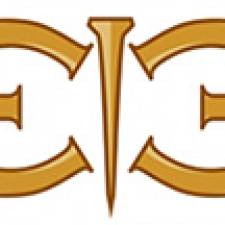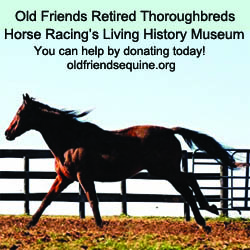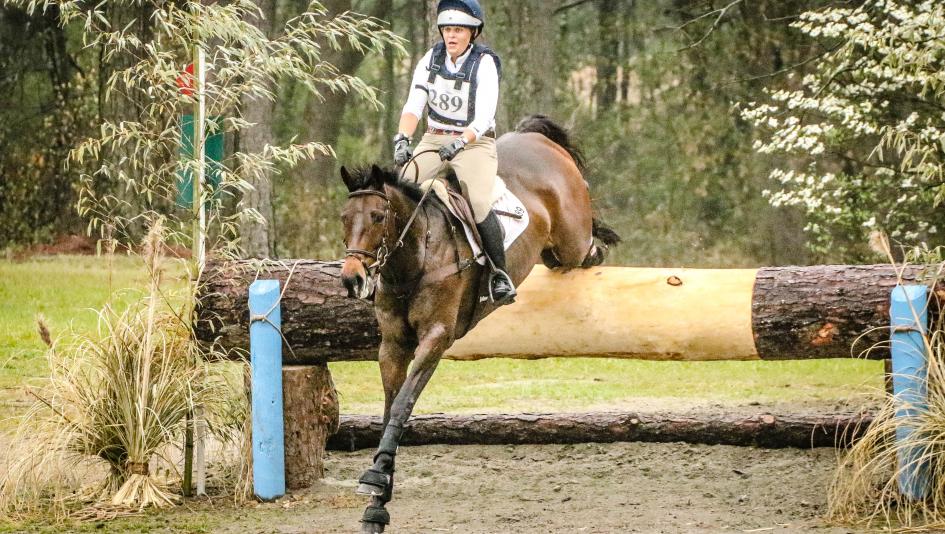
by Melissa Bauer-Herzog
In a career that has seen her work in the racing industry and ride a variety of off-track Thoroughbreds (OTTBs), US Equestrian’s Managing Director of Eventing Joanie Morris knows a little something about the breed.
This summer, while preparing for the 2018 World Equestrian Games (WEG) taking place in in Tryon, North Carolina, Morris sat down with America’s Best Racing to tell us about her journey to the managing director position, why she loves OTTBs, and some advice for those wanting to get into eventing.
1. Can you give us a rundown on what you’ve done in your career in the equine industry, both in racing and the performance horse world?
I’ve done just about every job! I never was quite sure where it would end up, but I cleaned a lot of stalls and drove all over the eastern half of the U.S. in the process. I started out as a working student for various people once I found eventing and rode and groomed for Phillip Dutton (I wrote him a letter and what started as two weeks over Christmas break evolved into the better part of a decade). I traveled with Will Faudree to the 2003 Pan Am Games and when he was the traveling reserve at the 2004 Olympic Games and I went to Burghley with Phillip in 2005 when he had two horses in the top 10.
It was during that time that I started trying to get some experience outside of the barn and began working for ST Publishing part time as they were just down the road from Unionville in Elkton, Md. I had graduated from the University of Delaware (with a history degree of all things) and was trying to figure out what was next. I was lucky that the Clancys gave me a chance. I went to Saratoga by virtue of Joe and Sean, and we traded advertising for a couch in a house that Richard Valentine was renting. It was an epic summer to say the least. I worked crazy hours, made some lifelong friends on the racetrack and had a newfound appreciation for the scope of the Thoroughbred industry (plus I had the kind of fun that you can only have in Saratoga when you are in your 20s).
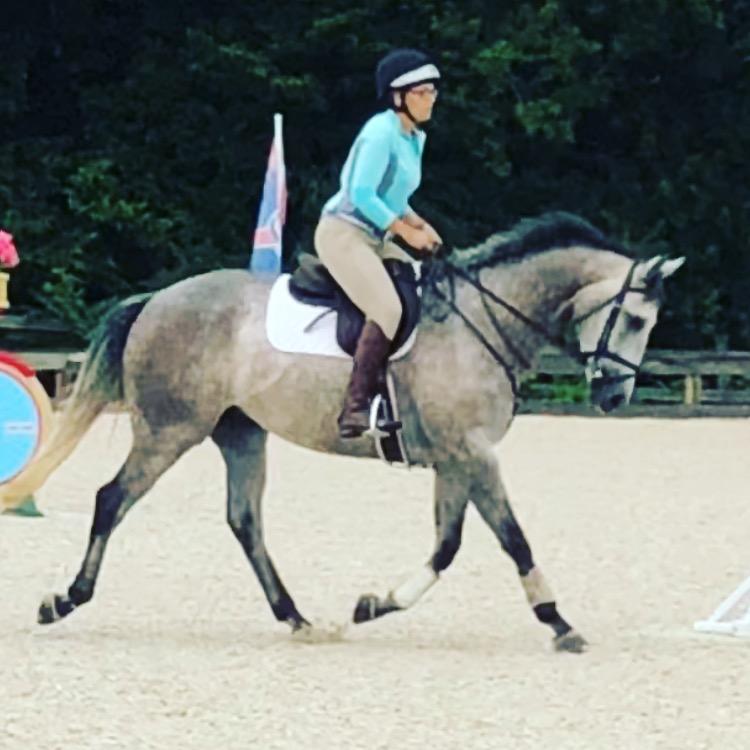
I had always followed steeplechase racing, but after that summer I was hooked on all things racing. It was the summer of Bernardini. In 2007 I was offered a job in the communications department at the US Equestrian Federation and jumped at the chance to live in Lexington, Ky. I worked my way up and was lucky enough to do two Olympic Games, a World Cup Final, two Pan Ams and a World Championships as the Press Officer. That evolved into the Managing Director job for eventing at the end of 2012. I have been very lucky.
2. What does your job as the Managing Director of Eventing entail?
It depends on the day. Managing the athletes, selection process, logistics, team staff, and all the details that go into fielding the best team, preparing accordingly, and developing strategies for executing at the games are all part of my daily life. The phone usually starts ringing at 7 a.m. and doesn’t stop until late in the evening. I work really closely with our athletes, their teams, our performance director (Erik Duvander) and all of the staff that keep our show on the road. We also have teams and individuals competing in Europe regularly so there aren’t many quiet days.
We also work closely with the FEI and the US Eventing Association, along with the team in the USEF Office. The sport of eventing is evolving and making sure we have quality competitions, well-educated officials, the right safety initiatives in place, and a pipeline of horses and athletes to win us medals now and in the future are all part of my job. We also have a lot of committees and working groups and rely on the expertise and guidance of our volunteers. No two days are the same, which is both exciting and daunting at the same time. We have a great sport staff at the USEF and we all work together under the guidance of our boss Will Connell.
3) When did you first start riding and how did you first get interested in horses? Why did you become an eventer?
I was five. My childhood best friend and I wanted to take riding lessons, so our parents told us to look in the phone book. Because we lived in small town there weren’t many choices. We started riding on Fred and Ladybug and had a blast. That went on for a while until the mother of a friend of my mom basically adopted me because none of her grandkids liked riding. Through her I learned a lot about making the best of whatever pony or horse you have. I did a lot of Pony Club on borrowed horses and my parents somehow managed to survive avoiding horse ownership for a long time. At that time eventing was still the natural progression from Pony Club and Massachusetts was still a stronghold of eventing. I don’t remember making a conscious decision to event, but I can’t imagine having done something else.
4. When did you make the transition to OTTBs?
The first Thoroughbred I ever had was a wonderful Australian horse who raced under the name Sir Nice. My young rider horse (a saintly overgrown Irish pony) had done more than his fair share, so I convinced my parents and grandmother that I needed another horse. “Ben” was that horse, and he had a heart of gold, and despite being only 6 was wise beyond his years. He took to eventing instantly but sadly died of an aneurysm at his fourth event just a few months after we got him. That really shook me. He was so stoic until the very end. They must not know how fragile they are or else they would not be so brave.
5. Can you tell us a bit about the Thoroughbreds (both retired racehorses and unraced) that you currently have in your string?
My husband Richard and I have a couple of lovely young horses at the moment. One that came via Des Ryan at Dell Ridge Farm at the suggestion of Michelle St. George. Michelle has a show horse background and we have the same taste in horses so when she tells me I will like one, she’s usually not wrong! Betterthanexpected was in training for [owner Klaravich Stables] with Chad Brown but never made it to the races. He’s all class, incredibly quiet and trainable (although clearly not very fast). He’s won two of his first three events at the age of 4. A group of our friends and family got together to pay his expenses and he’s certainly made “horse ownership” seem like a piece of cake so far for his first-time horse owners. His plans involve the Thoroughbred Makeover although he could also do the Young Event Horse Championships at Fair Hill in October.
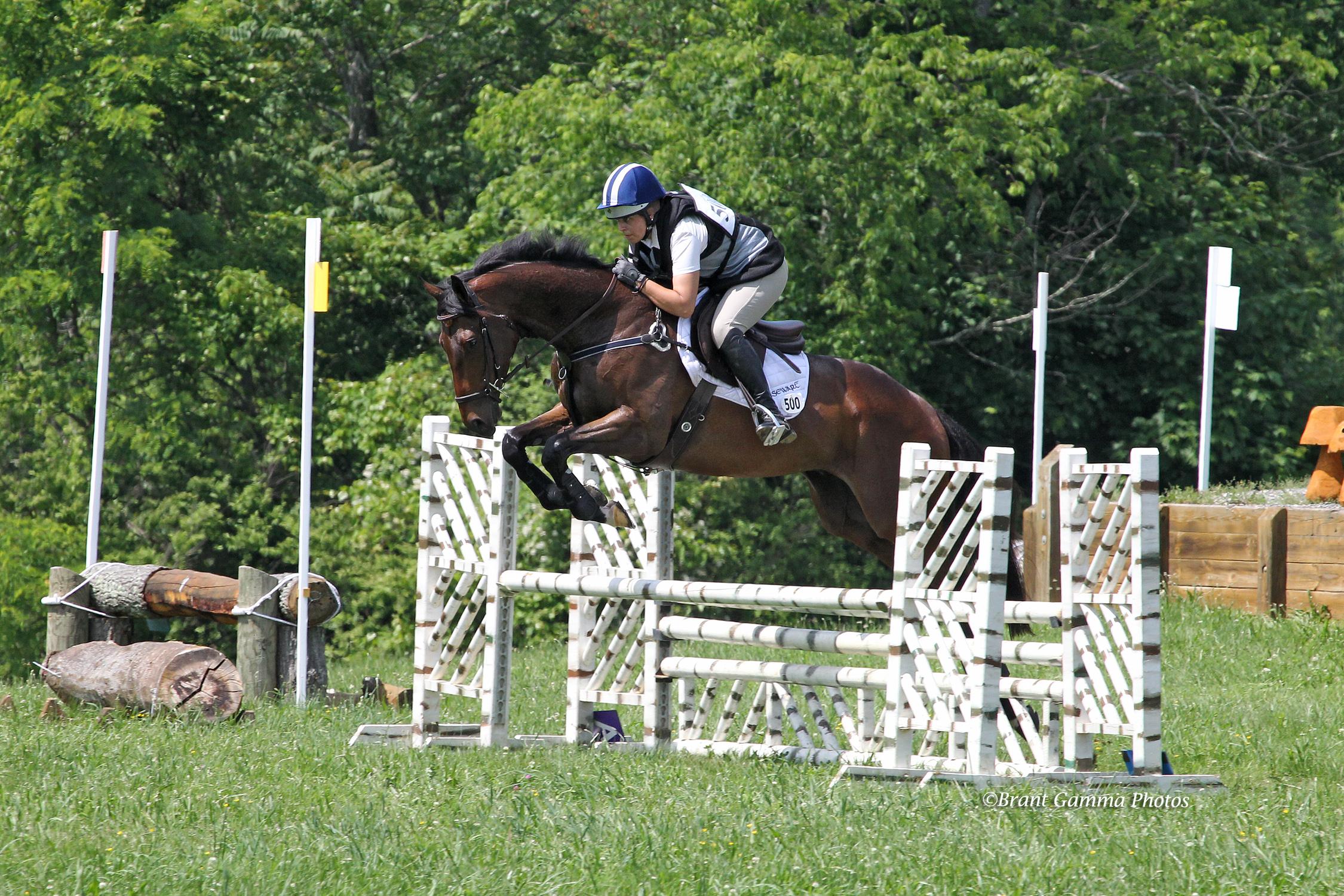
The second one was at Michael Dickinson’s in training, his name is Parker’s Choice. He also never raced, but he has some better known siblings including Inimitable Romanee. He’s a giant Giant’s Causeway that is a big goofball. He’s lovely to ride but is like a 13-year-old kid. He’s developing and getting into trouble all the time, but he’s 17.2 and only 5 and he’s still figuring out where all his legs go. He’s competing Novice and has done some jumper shows. I seem to be able to make a mistake on him each time out that keeps us from winning, but we will get it together one day!
I also have Four Schools, for whom we named the farm. He came from Richard Valentine and Jacqueline Ohrstrom as a wedding present when we got married in 2013. He ran 43 times, mostly over jumps and won about $170,000. He won a couple of stakes and ran at Saratoga. He is the kindest horse in the world, but has always been less than straightforward to ride, even as a racehorse. He got me back to the FEI level after 15 years and I am grateful for him for that, especially considering he took up eventing at the age of 12. He’s always been an overachiever and he always wanted to try to do whatever you told him to do and completed more than 30 events. I retired him this year at 16. He’s 100 percent sound but he just felt like he was over it and I believe he deserves a long and peaceful retirement. He has thousands of miles on his legs. So now he runs the farm, eats treats, doesn’t even look up from his hay when the trailer leaves the farm, and makes everyone smile.
6. What is your favorite thing about the breed? Why do you think they are so good for eventing?
They just try. They don’t give up and they want to do the right thing. I think because of their nature that it is easy to ask things of them that they aren’t quite ready for because they will give it their best shot. A huge component of eventing is endurance and there are no truer athletes than Thoroughbreds. They also never give up. At the end of a tough day of cross country, you typically see a lot of Thoroughbred breeding at the top of the leaderboard.
7. What piece of advice would you give someone new to OTTBs who wants to buy them?
Find one with a good mind. In order to be successful, they need to be trainable. Secondly, give them the time they need to be their best. They evolve and mature at different rates. Some understand everything you ask of them and some need more time to study it. We’ve sold several over the last few years: as fox hunters, kids’ horses, eventers; they’ve all been very different but they all have thrived in their new jobs. We believe that they also need time in the field, initially when they come off the track but then also as part of their daily life. Ours all go out 12 hours a day (or night in the summer), it is the best thing for their body and their mind.
8. What has been your biggest accomplishment with OTTBs?
It would have to be Four Schools. Going up the levels with him was really rewarding. We never won an event, but I learned a lot about the importance of a partnership and figuring out how to work with what I had. I competed another Thoroughbred at the 1* level in the early 2000s, I won a lot of Young Rider classes on him (his name was Fling’s Dream), so his achievements would be also highlights. He went on to take at least three or four other people to the FEI levels, he was also a super little trier of a horse. But developing each of them is an accomplishment, I am proud of all of the ones that have gone through our farm.
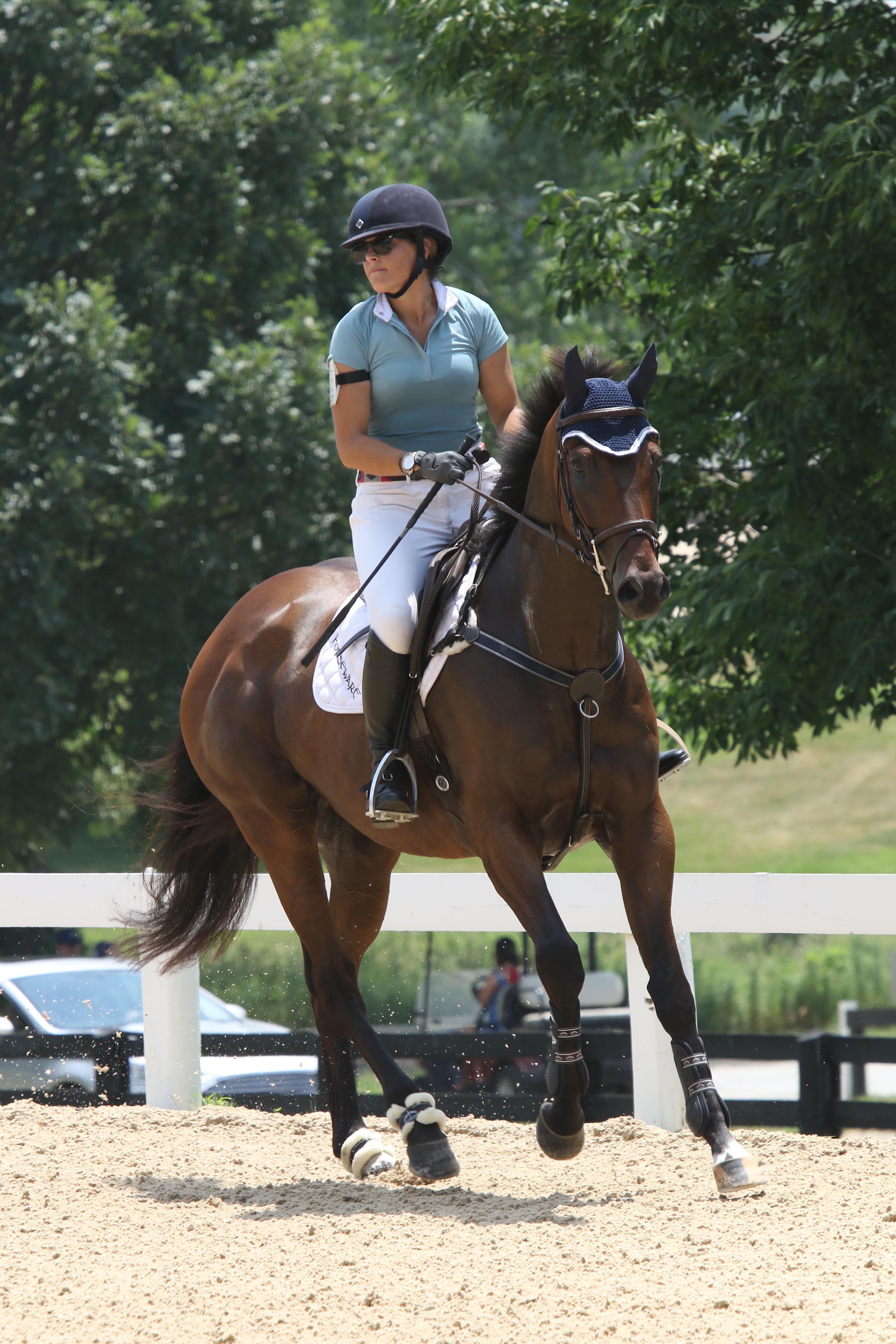
9. Who is your favorite OTTB you’ve ever ridden?
That’s a really hard question. Can I have three? Four Schools because he is “The King of the Farm” and just makes me so happy even though most people who have helped me with him just shake their heads at his antics. There is a horse named The Foreman who was second at two 4* events in 2005 with Phillip as a 9-year-old, he was as quirky as they come but was all heart but there isn’t more genuine horse to ride or take care of. Third, I am sure that one of the two monkeys I mentioned in question five will end up on this list!
10. What is one stereotype about OTTBs that you’d like to see disappear and how do you think it can be fixed?
That they are sharp and hot. They can be, but they can also be quiet and accommodating. There have been some great ambassadors for the breed and that really helps (Donner, Tight Lines, Icabad Crane, Blackfoot Mystery, Pirate, Simply Priceless to name a few in the last couple of years.) I think if you pay attention, horses will tell you what they want to be and for most of us non-elite riders, not trying to turn them into to something they aren’t is the key to their success.
11. What advice would you give a young adult who wants to get into high performance equestrian sports?
Try everything and take advantage of every opportunity. When I was 16 I drove 45 minutes on the weekends to muck stalls for a lady with show hunters. I ended up getting to go to Devon Horse Show with her. When I was 13 I answered an ad in the USCTA (now USEA) news and ended up getting to help someone I never had met at Radnor.
I met Karen and David O’Connor that weekend. You just don’t know where opportunities will take you. I learned a ton about all the disciplines being the Press Officer at the Olympics and WEG and learned how to contend with difficult situations. Being myopic is easy in the horse business because everyone has their head down working so hard to get ahead. It always seems like there is no time when you are young, but progress with horses takes so much time that you have to enjoy the process. Don’t get discouraged when things don’t go exactly as you plan.
Let’s be honest, I thought I was going to be riding at the Olympics just like so many kids that I see all the time. But the reality is that four (or starting in 2020 only three) people every four years get to represent their country. Never stop chasing your dream but never deprive yourself of opportunity either. I have been to four Olympics as part of the support staff and would not change it for the world. I have been to incredible places and met amazing people and horses along the way. There are not many elite riders, but there are a lot of people that make these sports happen.
12. Is there anything else you’d like to add?
We need people to find and produce horses in this country, and source the right kind of Thoroughbreds. We buy a lot of horses from overseas and I believe that we still have a lot of the right horses in this country. Too often we find them by luck, which is why I try to go see every horse someone calls me about from the racetrack. But there can be a more strategic approach, we need to get away from the concept that they are being rescued. That devalues them. Of course there are horses in tough spots that do need a better chance but there are also horses with very resourceful connections that with some thought and strategic planning can end up really succeeding. I think some trainers are really getting switched on to this. Graham and Anita Motion have come up with a plan that’s really working for them. They’ve had several horses go on to be successful in eventing. Investing in these horses for some time when they are finished racing to put some value on them to give them another career is inexpensive compared to the day rates at the racetrack. These horses can then become valuable in a second career.
This article originally appeared on www.americasbestracing.net and is published here with permission. Find out more about Dressage and Eventing right here on EIE. Find your next OTTB in our section on Rehome.










